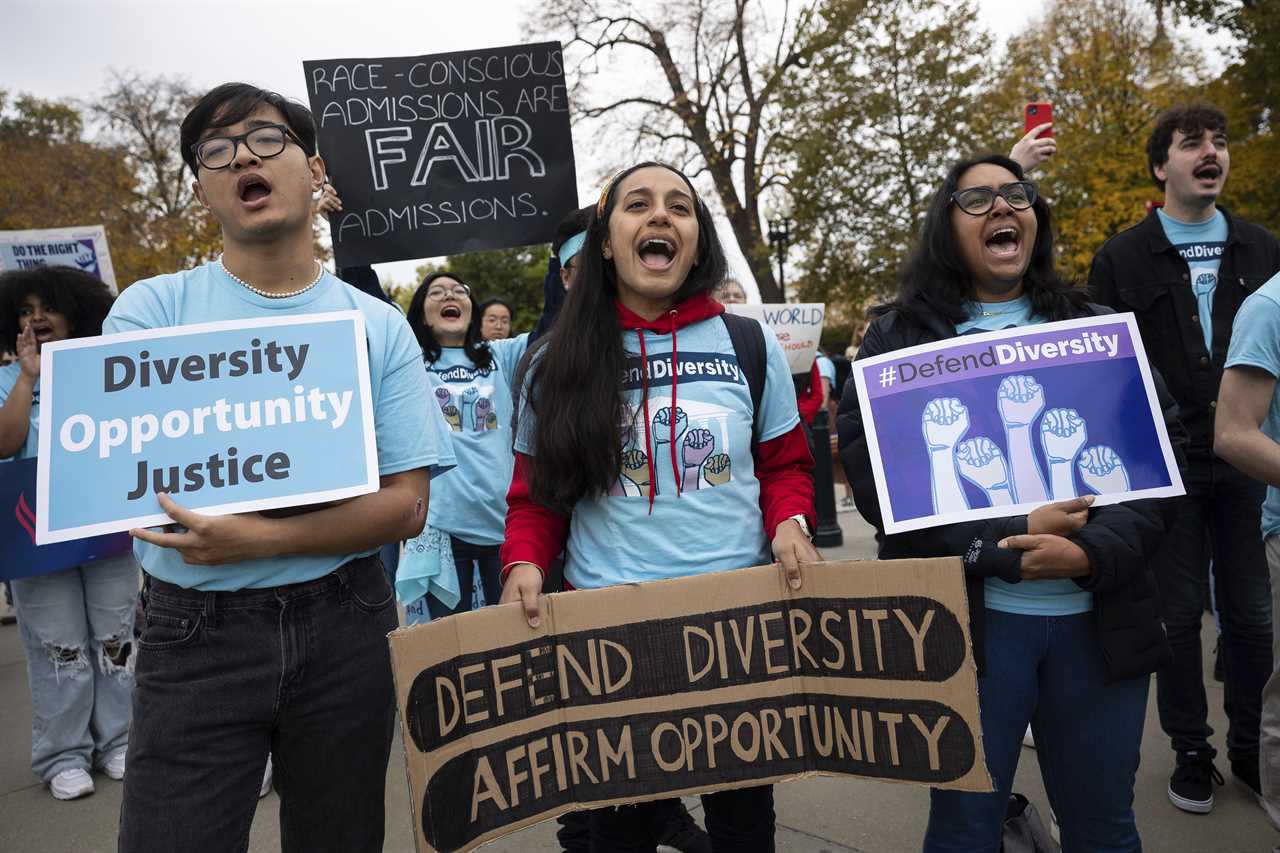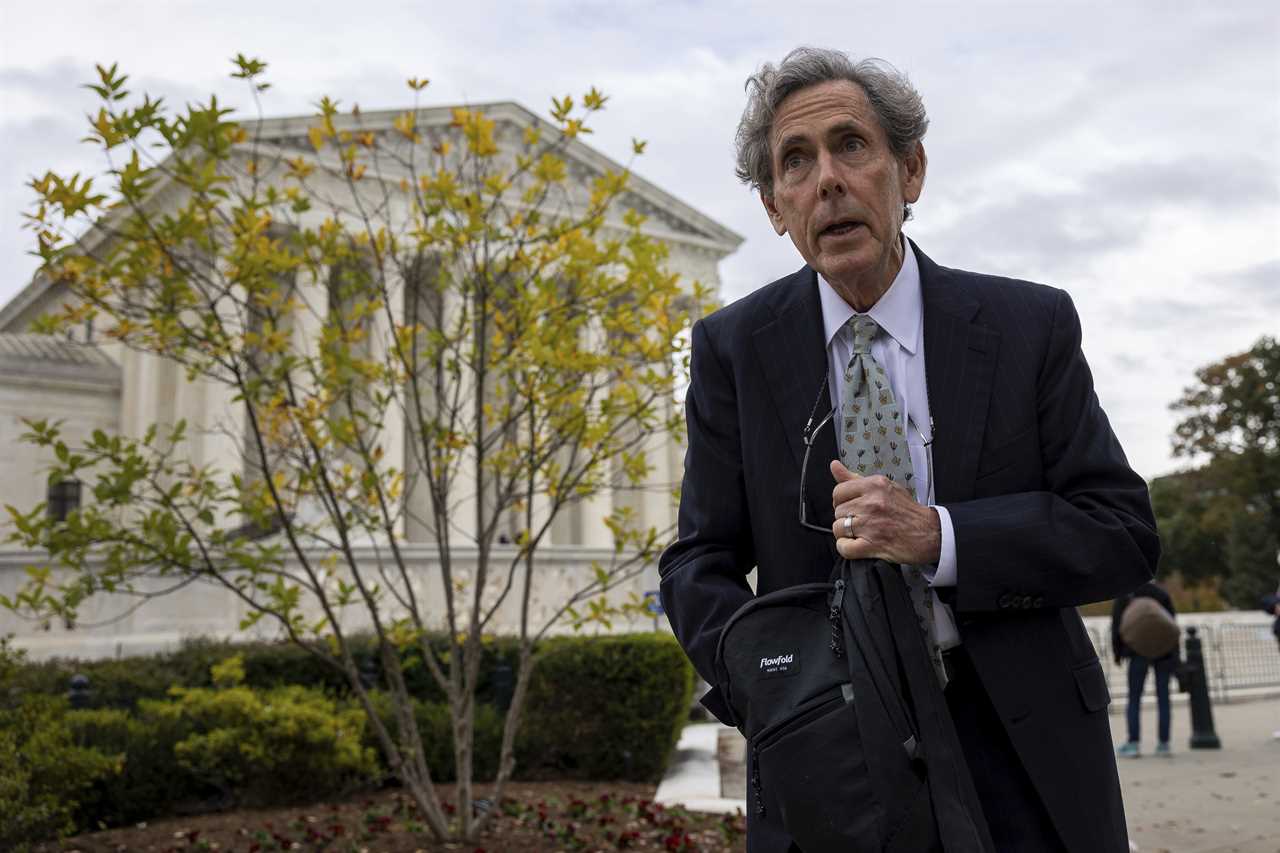
The 4th U.S. Court of Appeals recently upheld a new admissions process at the prestigious Thomas Jefferson High School for Science and Technology, known as “TJ,” a magnet school located in Alexandria, Va. The plan dramatically increased racial and economic diversity in the entering class through race-neutral means, though Asian student representation fell from about 70 percent to 54 percent in the first year (and was at 60 percent in the second year.)
Under the new system, the average GPA of the entering class rose to 3.95, and it was the most diverse class in recent memory. How? The plan enlarged the class size, creating more opportunity for all. It scrapped high-stakes entrance tests. It reserved slots for the most competitive 1.5 percent of students from every eligible middle school. All other students competed for the remaining roughly 100 seats. In a holistic admissions process, every student was evaluated based upon grade point average, a “portrait sheet” describing the applicant’s skills, a problem-solving essay and “Experience Factors” that gave a boost to students that were from low-income families or underrepresented middle schools, were designated English language learners or had special education status. Students were identified only by a number. No names, gender, race or ethnicity were revealed.
The Fairfax County School Board, which governs TJ, did this in the wake of George Floyd’s murder — an attempt to create a more equitable system of admissions where Black, Hispanic, low-income Asian and other disadvantaged students had a fairer shot at access to one of the highest-ranked public high schools in the country. A coalition of Asian parents sued, claiming that the new policy constituted racism against Asians. They argued that the race-neutral admissions criteria were a proxy for a desired racial result, which was fewer Asians.
The TJ case shows what is at stake in the Supreme Court’s pending decision on affirmative action in admissions at Harvard and UNC Chapel Hill, which is expected to be announced by the end of the month. The new conservative majority on the court decided to revisit four decades of settled precedent that held that some race consciousness by universities in building entering classes was constitutionally permissible, though rigid quotas were barred. Many believe the court will now set aside those precedents and end race-based affirmative action.
If the court led by Chief Justice John Roberts is absolutist in its demand for colorblindness under the Fourteenth Amendment’s equal protection clause, even race-neutral means like that implemented by TJ might one day be barred.
This is ironic. The 19th-century Radical Republican architects of the Constitution’s Reconstruction Amendments introduced racial equality as a constitutional imperative for the first time in American history. They sought to overrule the Dred Scott decision, end practices of white supremacy and confer on Black Americans, and other citizens, rights that whites were in fact bound to respect. If the Supreme Court suggests that any consideration of race is unconstitutional in college admissions, even pursuing racial diversity through race-neutral means, this invites future cases that might effectively turn the 14th Amendment into a mandate to maintain existing racial inequality.
The challenges to the affirmative action programs at Harvard and UNC are the seventh and eighth cases initiated by a conservative activist named Edward Blum who has made a career of recruiting litigants to challenge race-conscious policies and finding donors to pay for those challenges. He was the force behind the 2013 Shelby County v. Holder","link":{"target":"NEW","attributes":[],"url":"https://www.oyez.org/cases/2012/12-96","_id":"00000188-b959-d54f-affc-fb5d98770004","_type":"33ac701a-72c1-316a-a3a5-13918cf384df"},"_id":"00000188-b959-d54f-affc-fb5d98770005","_type":"02ec1f82-5e56-3b8c-af6e-6fc7c8772266"}">Shelby County v. Holder decision, which curtailed the Voting Rights Act and unleashed a wave of laws that make it harder for racial minorities, poor people, the young and old, to vote. He created the organization Students for Fair Admissions, the plaintiff in the admissions cases, and serves as its executive director. And Blum created another organization that has filed lawsuits to challenge diversity goals for corporate boards. The Pacific Legal Foundation helped the coalition that challenged TJ and has filed similar lawsuits against inclusive magnet school admission policies in New York and Montgomery County, Md.
These efforts and the recent case against TJ suggest where this colorblind movement may go next.
A closer look at the facts surrounding TJ is telling. In theory, TJ draws students from six Northern Virginia jurisdictions: Arlington, Fairfax, Loudoun and Prince William Counties, and the Cities of Fairfax and Falls Church. In practice, the majority of TJ students resided in Fairfax County, which is ranked No. 1 among Virginia counties for the quality of its public schools and is the second richest county in the state.

As the 4th Circuit put it, under the old system of admissions TJ’s incoming classes “were drawn principally from a limited group of ‘feeder’ middle schools in Fairfax County.” TJ’s entering classes also included very few low-income students, English-language learners, special education, Black, Hispanic or multiracial students. But TJ is one of 19 specialized Virginia Governor's Schools that receives state funding. In other words, TJ is subsidized by taxpayers who do not live in high-opportunity Fairfax, and it is supposed to be a public resource for an entire region.
Meanwhile a 2020 report produced by Virginia Commonwealth School of Education and its partners shows that school segregation by race and poverty is accelerating in Virginia. Researchers attribute much of rising segregation to “school district and attendance boundary lines that wall-off communities with highly differentiated wealth.” In Northern Virginia, boundaries between schools in the same school district contribute to 63 percent of school segregation.
School district administrators can choose to draw attendance zones in ways that encourage integration or encourage segregation. As parents and homeowners well know, there are marked differences in resources and teacher quality between schools in wealthy residential areas and those with large populations of low-income students. A key predictor of achievement gaps between white and Asian as opposed to Black and Hispanic students is the latter’s much higher exposure to low-income peers and unequal schools. In Virginia and throughout the country, Black and Hispanic public school students are more likely than their white and Asian counterparts to be relegated to schools with higher rates of leader and teacher turnover, fewer opportunities for advanced courses and inadequate funding compared to student need.
Yet adherents of colorblindness are asking governments and institutions to willfully blind themselves to the pervasive reality of racial disparities and the economic and social systems that produce them. They ask federal judges to pretend they don’t exist and deny any legitimacy to efforts to redress past and present practices that result in racial and economic exclusion. Taken to its illogical conclusion, a decision to redraw student attendance lines to produce more racial integration among students would not be allowed under the Pacific Legal Foundation’s colorblind absolutism. This defies the holding and spirit of Brown v. Board of Education.
The 4th Circuit found no evidence of discriminatory intent, which must be proved under the Fourteenth Amendment when challenging race-neutral practices. It noted that Asians still faired best under TJ’s new admissions criteria that everyone had to meet, and that low-income Asians were now much better represented, as were Blacks, Hispanics and low-income students of all colors.
An ideological demand for colorblindness should not be allowed to freeze in place systems of exclusion. It should not prevent employers from diversifying their workplaces and boards and trying to create a shared culture where everyone feels welcomed and no one endures discrimination or harassment. It should not prevent selective colleges or high schools from choosing to value characteristics that social science shows are more predictive of student success than test scores. Judging how well students achieve, measured against the educational opportunities available to them, is fair. Accepting high achievers from every middle school does this. It enables children who are not handed perfection, who have had to overcome systemic inequality, a fighting chance at high opportunity. It also recognizes that overcoming obstacles like poverty is itself a form of merit.
Opposing such efforts suggests an investment in the status quo, or possibly fear of the loss of dominance or entrenched advantage. “Anti-woke” is code, a dog whistle, a whipping up of hysteria about trying to make education and economic opportunity more available and inclusive, for everyone.
The TJ case is likely to be appealed to the Supreme Court. If the Roberts Court outlaws affirmative action this year and later uses the TJ case to embrace colorblind absolutism, we will be back to the fictions of Plessy v. Ferguson","link":{"target":"NEW","attributes":[],"url":"https://www.oyez.org/cases/1850-1900/163us537","_id":"00000188-b959-d54f-affc-fb5d9877000e","_type":"33ac701a-72c1-316a-a3a5-13918cf384df"},"_id":"00000188-b959-d54f-affc-fb5d9877000f","_type":"02ec1f82-5e56-3b8c-af6e-6fc7c8772266"}">Plessy v. Ferguson, in which the Court pretended that separate was equal and states were encouraged to erect and reify boundaries of exclusion. We will continue to be a land not of opportunity but of opportunity hoarding, in which elites win and The TJ case is likely to be appealed to the Supreme Court. If the Roberts Court outlaws affirmative action this year and later uses the TJ case to embrace colorblind absolutism, we will be back to the fictions of Plessy v. Ferguson","link":{"target":"NEW","attributes":[],"url":"https://www.oyez.org/cases/1850-1900/163us537","_id":"00000188-b959-d54f-affc-fb5d98770010","_type":"33ac701a-72c1-316a-a3a5-13918cf384df"},"_id":"00000188-b959-d54f-affc-fb5d98770011","_type":"02ec1f82-5e56-3b8c-af6e-6fc7c8772266"}">Plessy v. Ferguson, in which the Court pretended that separate was equal and states were encouraged to erect and reify boundaries of exclusion. We will continue to be a land not of opportunity but of opportunity hoarding, in which elites win and all others struggle.
----------------------------------------
By: Sheryll Cashin
Title: Opinion | The Risk of 'Colorblind Absolutism'
Sourced From: www.politico.com/news/magazine/2023/06/14/colorblind-absolutism-affirmative-action-00101754
Published Date: Wed, 14 Jun 2023 03:30:00 EST
Did you miss our previous article...
https://consumernewsnetwork.com/politics-us/bidens-nominations-are-being-sunk-by-a-surprising-part-of-the-senate






